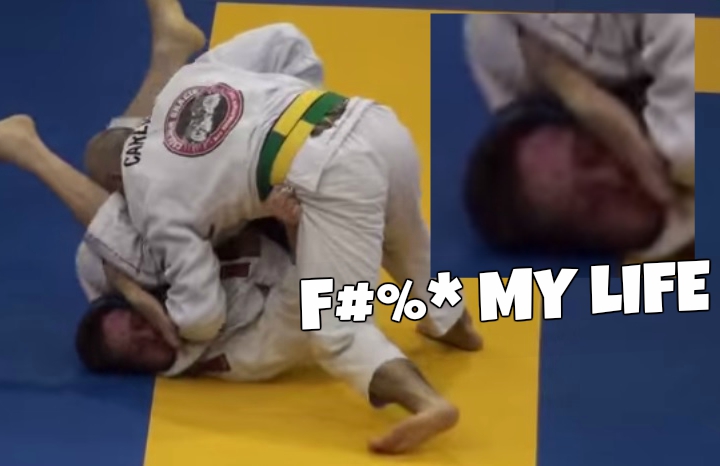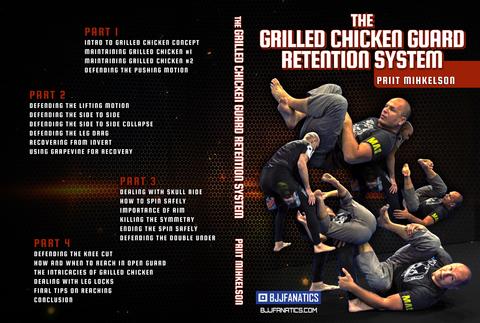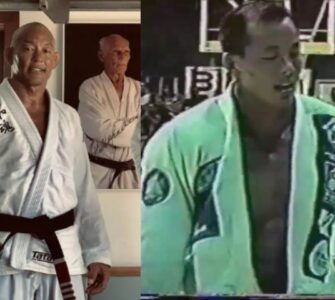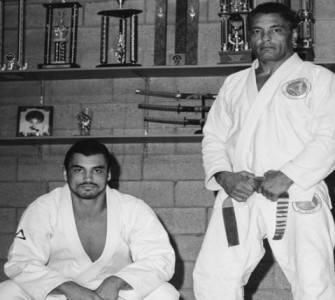Guest post by Masafumi Matsumoto, a BJJ black belt from Japan who has been travelling the world, training, competing and working as a translator. ‘Masa’ is known for having a very good guard, especially his spider guard.
Do you know why your guard sucks and what to do about it?
Perhaps you’re aware of it, but not sure of how to improve your guard playing skills.
Or perhaps you’re not even aware of it. (This can be a great opportunity to face it, my friend.)
Or you may be an awesome guard player. If that’s the case, this article is not for you.
On that note, this article is not for you if …
You are Keenan Cornelius, Michael Langhi, Joao/Paulo Miyao, or basically any world class black belt whose guard ordinary people usually cannot pass.
You may not be one of these people above, but pretty much everyone you train with hardly passes your guard.
Your guard does get passed from time to time, but when it happens, it’s usually by people who are stronger, heavier, and more experienced than you (e.g. You’re a blue belt, no blue or purple belt partners pass your guard, and those who pass your guard are brown and black belts.)
But, this article is for you if …
You don’t know what to do when you’re on your back.
You are secretly scared of playing the guard.
Pretty much everyone passes your guard.
So, here’s the question–why does your guard suck? There can be a variety of different answers. Let’s look at some of them.
The following answer might be really obvious, but here you go:
You don’t have a go-to guard position.
When you’re a beginner or you start to work on your guard skills, you can be easily overwhelmed by how many guards there are in the game. And as a consequence, you’re left alone and confused… without actually knowing what to do when you’re on your back.
If this is why your guard sucks, the solution can be just as obvious and straightforward:
Choose one guard position and stick to it!
Instead of trying to become decent at spider guard, de la riva, half guard, butterfly guard, x guard, closed guard, and everything else, you can focus that energy on learning one guard position, become great at it, and start adding other positions to your game if you wish.
Yes, you do need to learn what to do if your opponent forces you into half guard when your go-to position is spider guard, but think about it… you can focus on learning how to transition from half guard to spider guard (or whatever you choose as your go-to guard position). It’s much simpler and less time consuming than trying to learn various guard positions at once.
Probably the easiest way to choose your go-to guard position is to see what excellent guard players with the body type similar to yours do.
Once you’ve made that choice… now it’s time to commit to it.
And again, you can focus on the defense aspect of your guard initially, instead of dividing time between the defense aspect and the offense aspect.
And what if you know your go-to guard and people still pass you easily?
Here are some hints about defending your guard.
You need to be preventative when it comes to defending your guard. The earlier you can address potential threats, the better your guard will be.
So, if you tend to start worrying about what to do when your opponent gets into the leg drag position and put his bodyweight on you, it’s much better to start paying attention and dealing with potential threats that lead to that position, like the way your opponent makes grips (you need to break them) and the angle he takes (you need to adjust your position to neutralize that potentially dangerous angle).
You also need to manage the distance between you and your opponent. You don’t really need fancy moves to manage the distance.
In essence, defending your guard is mostly about: leg circling (to block your opponent’s advance at mid range), creating frames (to block your opponent’s advance at short range), and hip escape (to stay away from your opponent and to adjust your angle).
Or in short… block and move away.
That sounds ridiculously simple, doesn’t it? It may not be easy to implement (you gotta learn these skills), but it’s actually this simple.
So, here’s the bottom line:
Choose one guard position and commit to it (for now).
Be preventative.
Focus on blocking and moving away by leg circling, creating frames, and hip escape.
If you want to improve your guard, keep these in mind for the next few weeks, and see how your guard improves. Good luck!
Improve Your Guard Retention So It Is Hardly Ever Passed: Even If You Are Older & Lack Flexibility.
41 Year Old Estonian Priit Mihkelson (It Is A Little Country Near Russia) Figures Out A System For Older Grapplers To Retain Guard Easily.
If you lack flexibility, athleticism, youth, and explosiveness this is the system for you.


















